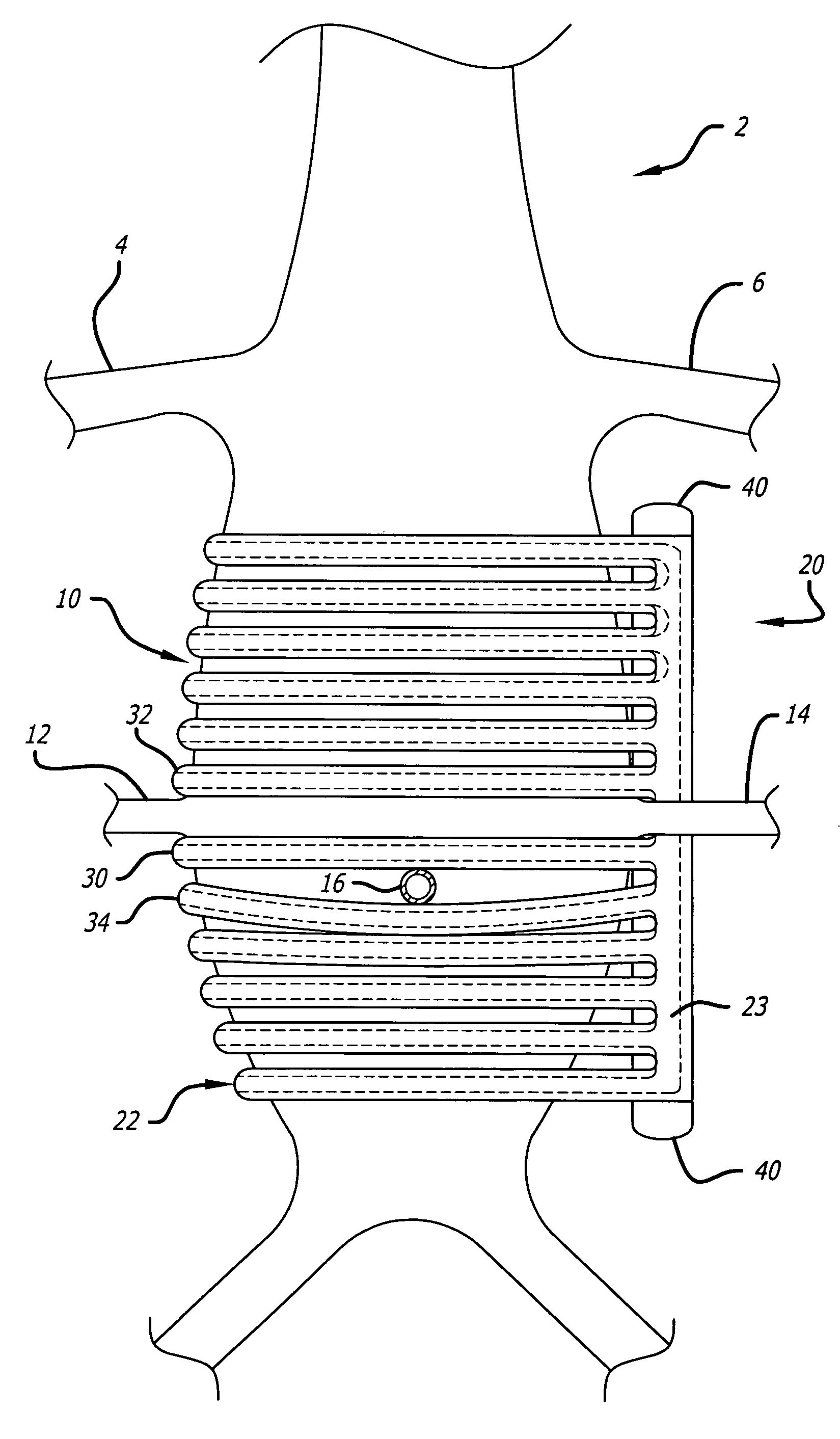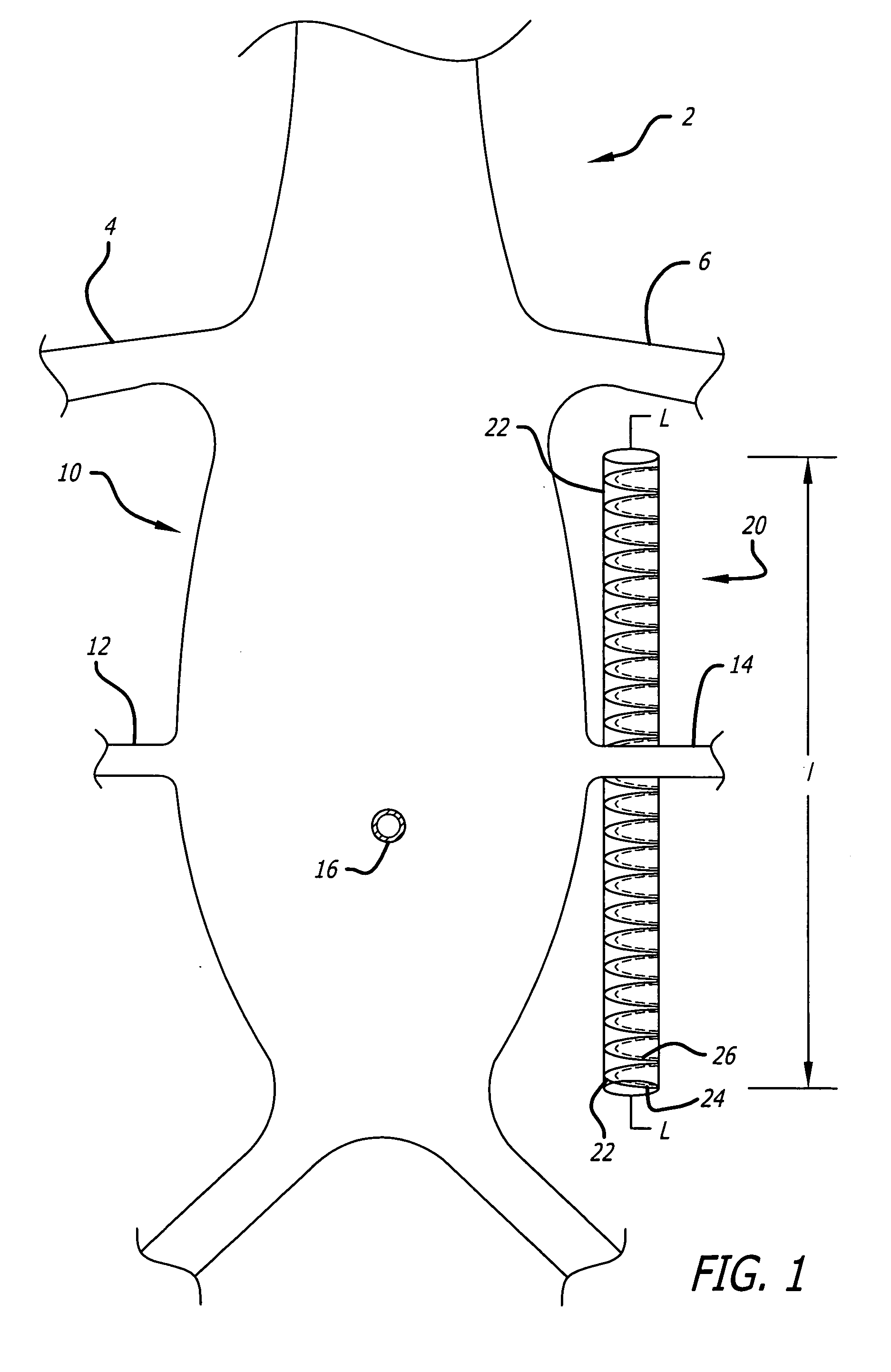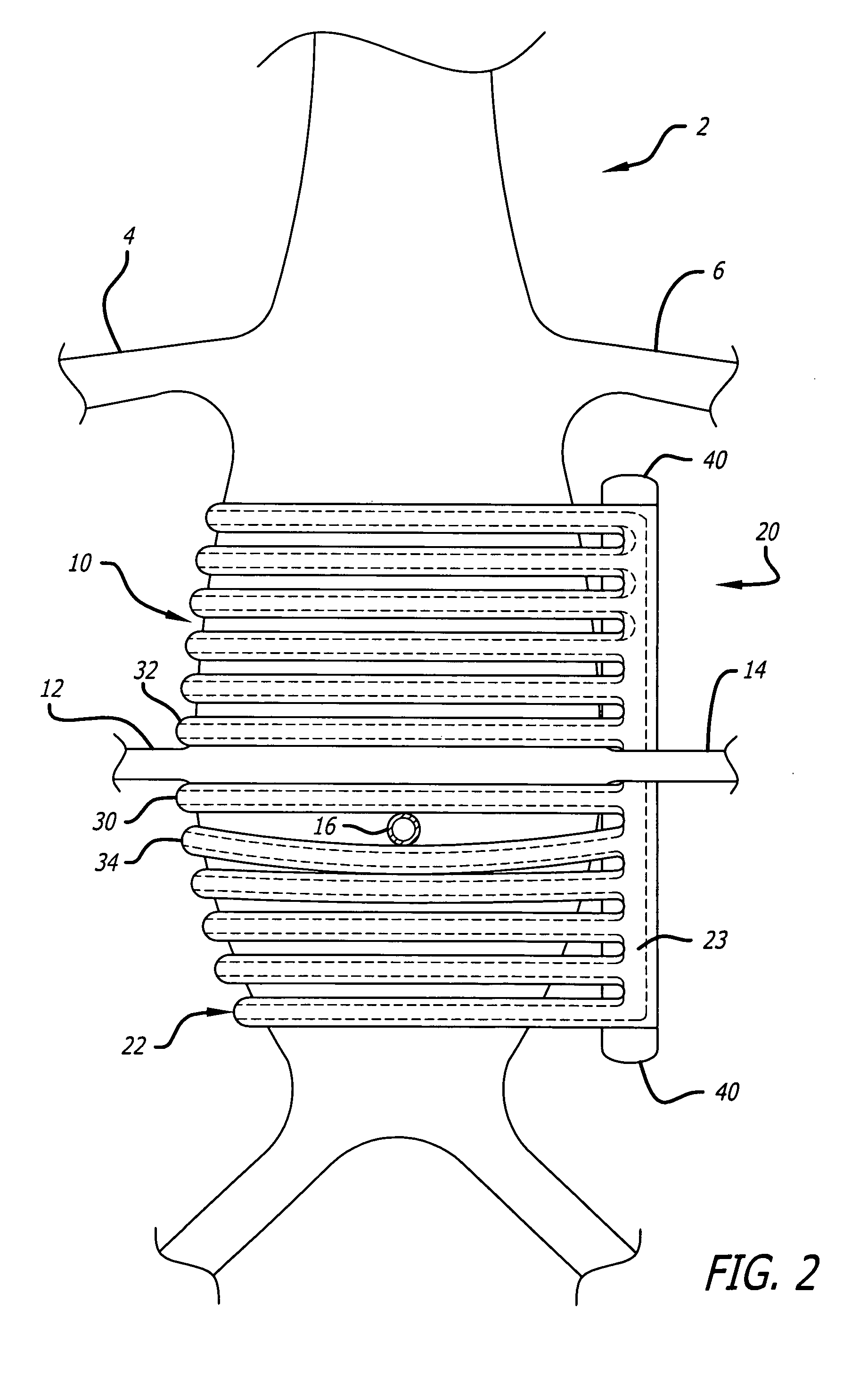Aneurysm treatment system and method
a treatment system and aneurysm technology, applied in the field of medical devices, can solve the problems of high cost, long time, and substantial patient morbidity, and achieve the effect of reducing the dilation or progression of the cerebral aneurysm and mitigating adverse effects
- Summary
- Abstract
- Description
- Claims
- Application Information
AI Technical Summary
Benefits of technology
Problems solved by technology
Method used
Image
Examples
Embodiment Construction
[0176]FIG. 1 shows a first embodiment according to the present invention in context of an abdominal aortic vascular tree 2. Tree 2 includes first and second renal arteries 4,6, respectively, an abdominal aortic aneurysm (“AAA”) 10, and various side branch or “perforator” vessels 12,14,16, respectively, extending from the aorta 2 along the AAA 10. An external AAA stent-graft assembly 20 is shown in an anterior view (e.g. looking down onto the exposed aorta from front-to-back, such that the anterior side of the aorta 2 faces out from the page, and the posterior side of the aorta is behind the page).
[0177] Assembly 20 includes a plurality of transverse members or fingers 22 located in a linear array along a length I relative to a longitudinal axis L. Each transverse finger 22 includes a graft body 24 with a support scaffold 26 shown in shadow and coupled to graft body 24. FIG. 1 shows the assembly 20 in one mode of use positioned along side of AAA 10 prior to deployment of the externa...
PUM
 Login to View More
Login to View More Abstract
Description
Claims
Application Information
 Login to View More
Login to View More - R&D
- Intellectual Property
- Life Sciences
- Materials
- Tech Scout
- Unparalleled Data Quality
- Higher Quality Content
- 60% Fewer Hallucinations
Browse by: Latest US Patents, China's latest patents, Technical Efficacy Thesaurus, Application Domain, Technology Topic, Popular Technical Reports.
© 2025 PatSnap. All rights reserved.Legal|Privacy policy|Modern Slavery Act Transparency Statement|Sitemap|About US| Contact US: help@patsnap.com



